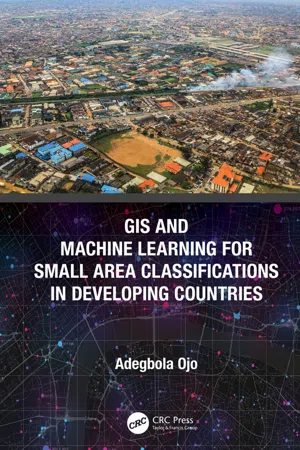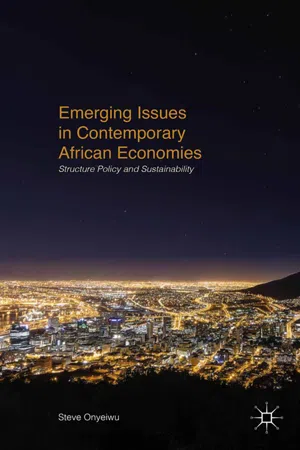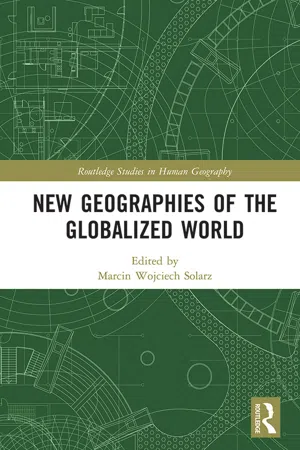Geography
Closing the Development Gap
Closing the development gap refers to efforts aimed at reducing disparities in economic development and living standards between different regions or countries. This involves implementing policies and initiatives to address issues such as poverty, inequality, and access to resources and opportunities. The goal is to promote sustainable development and ensure that all people have the chance to thrive and prosper.
Written by Perlego with AI-assistance
Related key terms
1 of 5
3 Key excerpts on "Closing the Development Gap"
- Adegbola Ojo(Author)
- 2020(Publication Date)
- CRC Press(Publisher)
Understanding the present and future demographic shifts across the developing regions of the world can help inform development planning and policymaking. In addition, such insights can also help with identifying areas where development policy programs should be scaled to reach the teeming numbers of people in need. The clarification of the myths and realities surrounding shifting demographic profiles also offers opportunities to accelerate progress in multiple areas of sustainable development. This chapter has dissected some of the key demographic patterns and transitions that have knock-on effects on the social, economic, environmental, and political sustainability of developing regions together with the kind of public policy questions that they invoke. The declaration of the MDGs and subsequent SDGs is clearly a stated intent to urgent action. However, whether the future of developing nations is promising or perilous depends on how the international community moves to give special priority to those development goals that will give these regions a competitive edge through their youths.The ability to translate global initiatives into local action requires the building of linkages between locally grounded action, national policies, and international priorities. It starts with a better understanding of what is happening within and across local communities based on shifting demographic patterns. It also requires the determination of and commitment from key stakeholders to revisit current approaches used for understanding, explaining, and responding to geographic inequalities at the local scale. These competing demands remain grounded in processes of socio-spatial differentiation at intra-urban and intra-rural measurement scales. For instance, the provision of educational, health, and security services in developing nations involves the disbursement of enormous budgets at the local level.Geographic information system (GIS) is a technology that is used to integrate, analyze, and display geographic information. These technologies are becoming widespread and their capability to represent and manage relevant human development information relating to supply, demand, and milieu is increasingly making them the medium of choice for efficient and effective delivery of public policy and services in developing countries. Since the emergence of contemporary GIS, human population geography has witnessed a renaissance in the area of policy-related spatial analysis. For instance, the grouping, classification, and mapping of small administrative geographic areas is an area that has generated increasing interest among researchers of spatial sciences lately. These types of classifications are developed based on geographic and social theories that suggest that people with similar characteristics are more likely to reside within the same type of locality; based on this premise, there will be different types of localities and that these types of localities will be distributed, for instance, across a nation’s geographic landscape.- eBook - ePub
Emerging Issues in Contemporary African Economies
Structure, Policy, and Sustainability
- S. Onyeiwu(Author)
- 2015(Publication Date)
- Palgrave Macmillan(Publisher)
Chapter 10 Closing the Development Gap in AfricaA major conclusion from this book is that the economic performance of African countries has been impressive in the past decade, compared to the 1980s and 1990s. Although it is uncertain whether this performance will be sustained, it is clear that the African economic landscape is changing in unprecedented ways. While regaling in Africa’s growth performance, a crucial question must be posed: given the region’s abundant resources, demographic profile, rich culture, and untapped potentials, can it do better? Trivializing this question runs the risk of making African countries seem complacent about the need to maximize their performance. As a matter of fact, Africa does suffer from a “development gap.” A development gap exists when a country’s economic performance falls short of what can be expected, given its resources and the performance of peers. Many African countries are still far inside their “development frontiers.” Indeed, with the appropriate policy and institutional environments, African countries are capable of achieving and sustaining double-digit growth rates.Africa, no doubt, has come a long way from its dismal economic performance of the 1980s and 1990s, but the gap between it and the rest of the world is still very wide. For instance, whereas per capita income in the West has risen 20-fold since the industrial revolution, per capita income in Africa has barely risen fourfold (Munk, 2013, p.19). Based on key economic indicators, no single African country has quite matched the performance of the “Asian Tigers.” The performance of the so-called African “cheetahs” falls short of the performance of even the least Asian Tiger.1 As a further manifestation of the development gap in Africa, table 10.1 - eBook - ePub
- Marcin Wojciech Solarz(Author)
- 2018(Publication Date)
- Routledge(Publisher)
The frequent outcome of such an approach is that little attention is paid to regional and local disparities. This can be a source of misleading results in studying global development, since the main feature of the last quarter century is rather the existence of contradictory trends on various geographical scales (Smith 2008). While international inequalities have been tending to decrease, the gaps between regions are on the increase in many countries. This is true on the one hand for less developed countries, where, as Ravallion and Chen (2012) show, inequality in per capita income significantly decreased between 1980 and 2005, while intranational disparities have risen. Similar tendencies can be found in the European Union, where gradually reducing national differences are mainly due to robust growth in more competitive regions, usually metropolitan and/or relatively close to the core economies of the EU, which in turn has led to a deepening regional gap (Puga 2002; Petrakos, Kallioras and Anagnostou 2011; Smętkowski and Wójcik 2012). Another typical example is China, where unequally allocated state investments in favour of more developed provinces and higher economic growth at the national level also massively propelled increasing regional disparities for several decades, until a gradual turn began in the 2000s (see Box 2.1). Fourth, a rich literature exists concerning increasing socio-spatial inequality in urban contexts in the form of neighbourhood segregation and unequal access to public services and even to public spaces (Gyuris 2017). This is a common tendency in most cities of both the global North and global South, also fuelled by urban policies which have been implemented globally and adopted in very diverse local contexts in order to attract private investment to compensate for the decline in public (i.e. state) funding (Peck and Theodore 2010)
Index pages curate the most relevant extracts from our library of academic textbooks. They’ve been created using an in-house natural language model (NLM), each adding context and meaning to key research topics.


